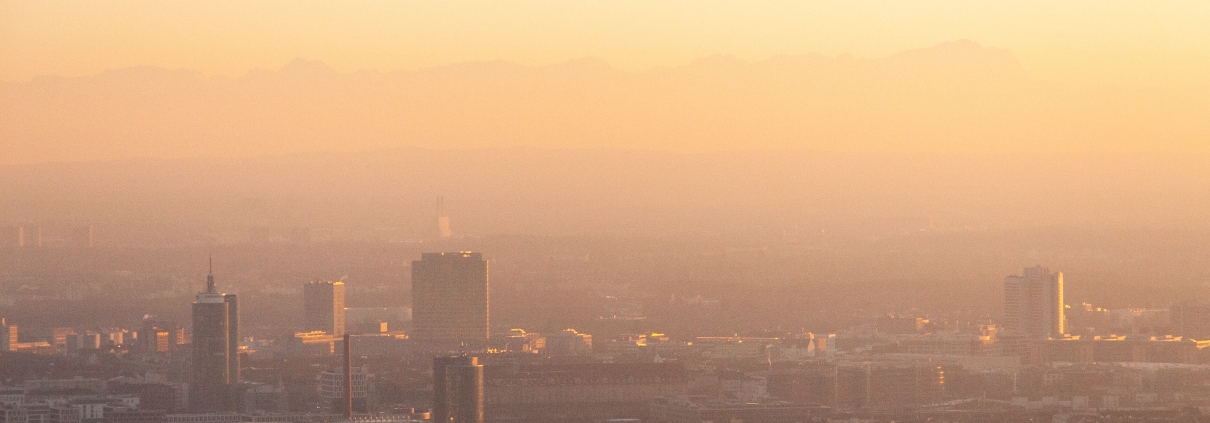Where does smog get its colour from?
We all know that the reddish-brown haze that hangs over our cities signals poor air pollution from smog. But where and why does this phenomenon occur? Read on to find out.
What is smog?
Smog is a type of air pollution that reduces visibility. The term “smog” was coined in the 1900s as a portmanteau of the words “smoke” and “fog”. There are two main types of smog: photochemical and sulphurous.
Photochemical smog is most common in urban areas. It is produced through a reaction of sunlight with nitrogen oxides (NOx) and volatile organic compounds (VOCs) that originate from car exhaust, coal power plants, factory emissions, and other sources.
Sulphurous smog results from a high concentration of sulphur oxides (SOx) in the atmosphere from fossil fuels high in sulphur, such as coal. It is exacerbated by dampness and particulate matter (PM).
A meteorological phenomenon called temperature inversion can cause smog, especially in urban areas and in the wintertime due to the absence of wind. Normally, air temperature drops at higher altitudes. In the winter or at night, however, the atmospheric layer closest to the ground can be cooler than the air above it. During longer periods of high atmospheric pressure in the winter, the solar radiation heats up the air masses near the ground. This accumulated heat is lost at night due to lack of cloud cover, causing it to rise and subsequently trap the now-cool air at the ground. As a result, pollutants such as carbon monoxide (CO), nitrogen oxides (NOx), particulate matter (PM), and volatile organic compounds (VOCs) are now stuck at the ground level until the temperature changes.
Where does smog get its colour from?
The reddish-brown haze that so many people associate with poor air quality in their cities comes from the nitrogen oxides (NOx) in photochemical smog. Black smog comes from soot and smoke, which are composed of black carbon (BC) and particulate matter (PM). If the haze above your city appears to be blue, it could be primarily composed of ground-level ozone (O3), a pale blue gas that is a precursor of smog and a product of the so-called nitrogen cycle, in which nitrogen dioxide (NO2) is converted into ozone under the influence of sunlight.
Smog also creates red sunsets. Typically, the colours of the sky result from sunlight deflecting off nitrogen and oxygen molecules in the air, a phenomenon known as Rayleigh scattering. Because the wavelengths of light aren’t scattered equally, the colours that one sees during the day (blue) versus at sunset (orange) are determined by the distance light has to travel, which affects how much of it is being deflected. Colours with shorter wavelengths are scattered the most, starting with violet, then blue, then green, and so on and so forth.
Aerosols generated from human activity add to the scattering of radiation, thus eliminating the cooler colours and the typical orange and yellow to result in beautiful, deep red sunsets.
How can smog be dealt with?
Every single one of the air pollutants that make up smog are harmful to human health and the environment. The best way to tackle urban air pollution, smog included, is to implement informed, targeted policies. To help with this, an effective city-wide air quality monitoring network is imperative. At Breeze Technologies, we offer high-end, lower cost, small form factor sensors that measure for all major air pollutants, including the ones that make up smog. The data is analyzed real time on our proprietary Environmental Intelligence Cloud, with comparisons to national and international air quality thresholds available so that cities can make the best decisions for cleaner air. Contact us today for more information to keep your skies blue!



